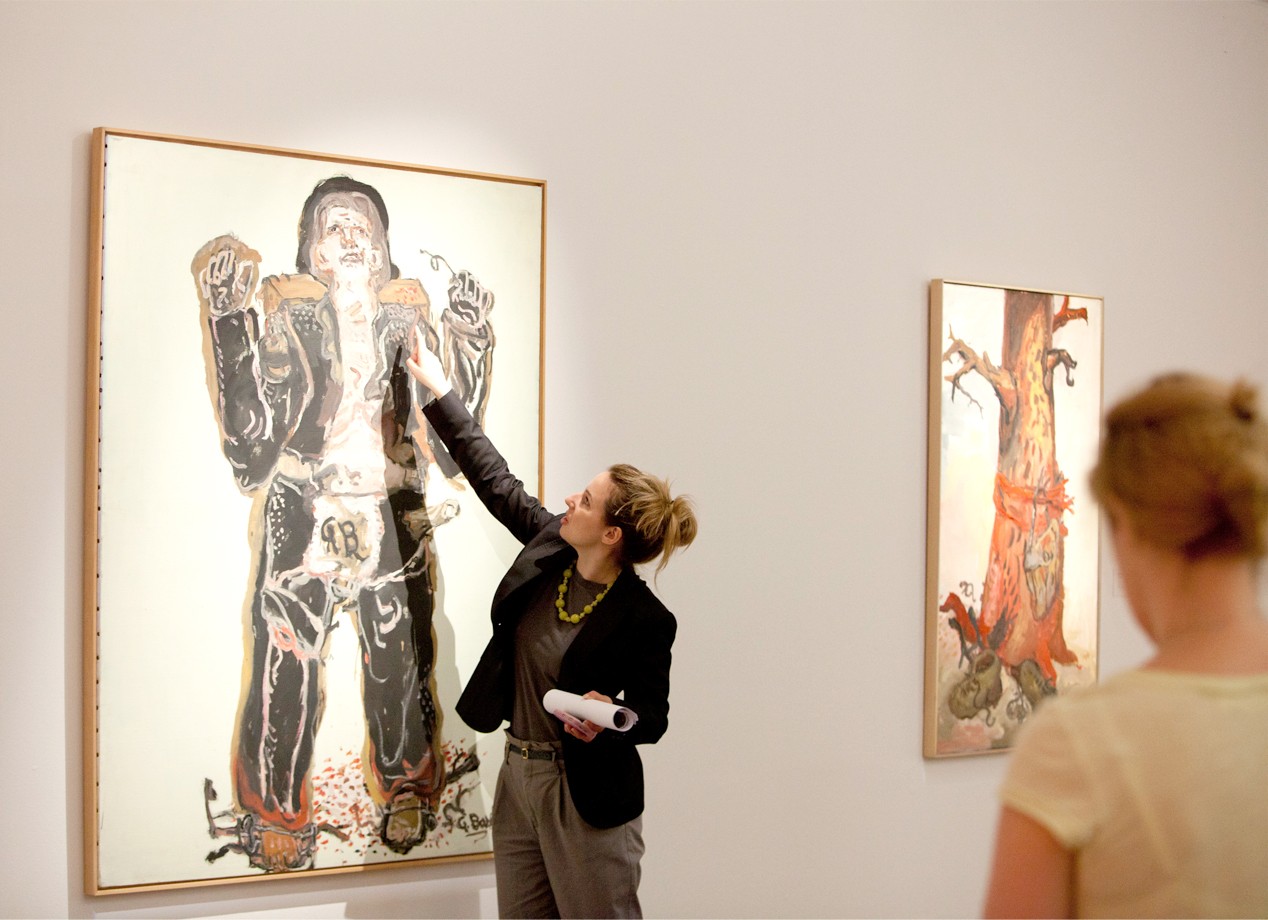Visits to artists’ studios, museums, galleries, and fairs are a distinctive aspect of how our Master’s programs prepare students for life as art business professionals. Our discussions of theoretical models, art historical trajectories and current art world controversies are all illuminated and sharpened by first-hand encounters with specific works in their immediate surroundings.
Here, we explain why choosing to kick start your art career by studying with Sotheby’s Institute of Art will take your learning beyond the classroom walls and out into the world.
Why go on study trips to learn about contemporary art?
The short answer is that at Sotheby’s Institute of Art we start with the artwork itself.
In the classroom we can only view works as reproductions, which don’t always capture crucial details - the shadows cast by a sculpture, audience tension at a performance or the scale of a land art project. Immersive involvement makes us engage with artworks in all their complexity.
A longer answer would hone in on two aspects of the artwork as it is experienced in situ...
Artworks can be location-specific
Many artworks today are made in response to a given site. One of the paradoxical effects of globalisation is a growing interest in specific locations, their populations, histories and cultural traditions.
If an artist makes a site-specific work in response to, say, the clubbing district of Liverpool (Teresa Margolles’s Sobre el Dolor, 2006), or the long history of Venetian trade with the Middle East (Mike Nelson’s I, Impostor, 2011), the best way to understand those interventions is to view the works in situ.
As movement and place are central artistic concerns, we need to move from place to place to view artworks in the locations for which they were made.
Context creates meaning
At Sotheby’s Institute of Art, we prefer to view artworks not as objects that carry fixed meanings but as creations that are activated by their contexts. Artworks may interact with the central narrative of a show, for instance, or the lighting and proportions of a room, or the history of a museum or gallery.
We travel to destinations around Europe to consider experimental curatorial tendencies in the institutions that have pioneered them - often - but not always - small-ish public spaces. We look at works in situ to consider them in tandem with the curatorial schemes that condition our experience of them. As many of our students hope to take up curatorial roles in their future art careers, an understanding of the curatorial framing of objects is doubly important.
To study an artwork in situ is to recognize that all works enter into vital and evolving dialogues with their settings. This is a crucial lesson for anyone who wants to work in the contemporary art business.
